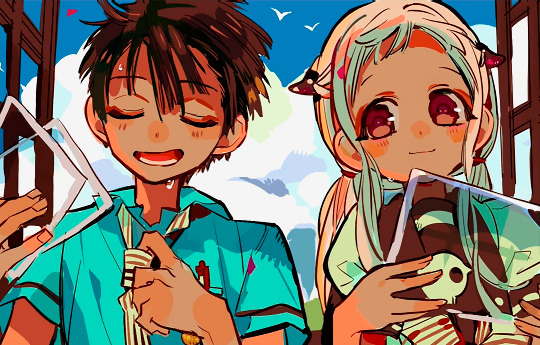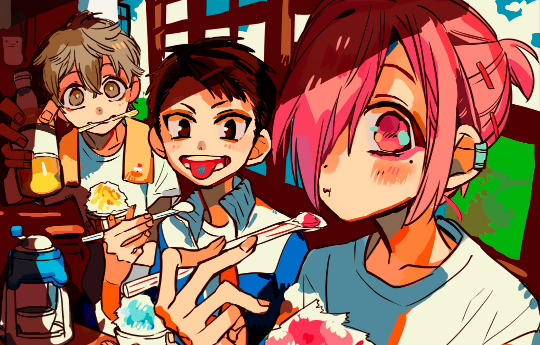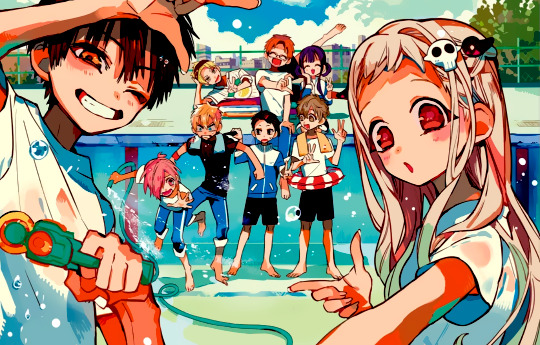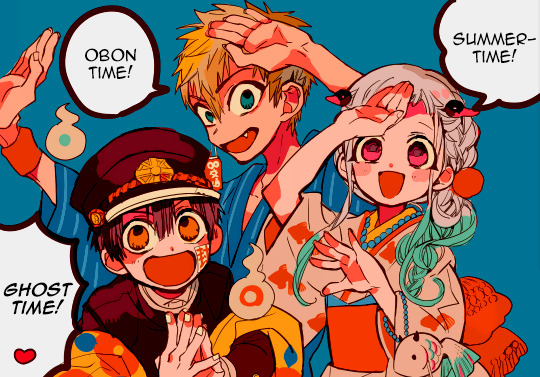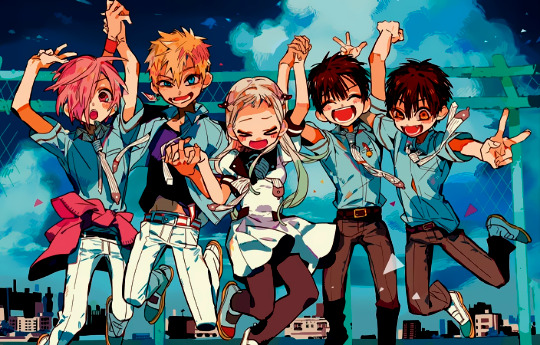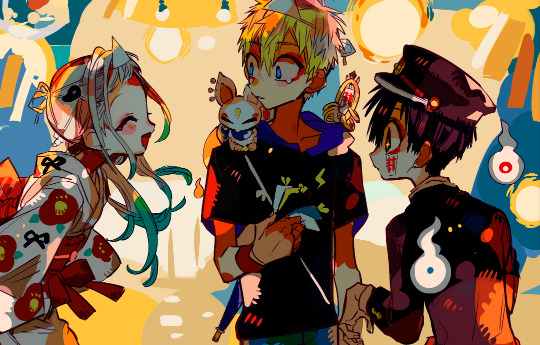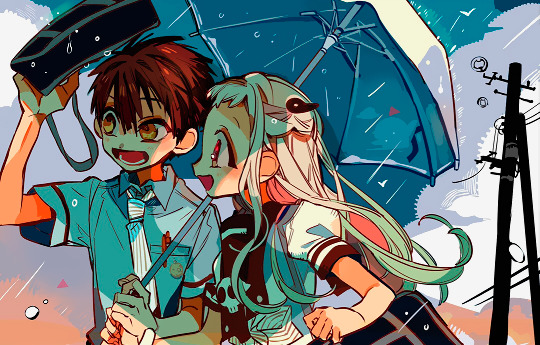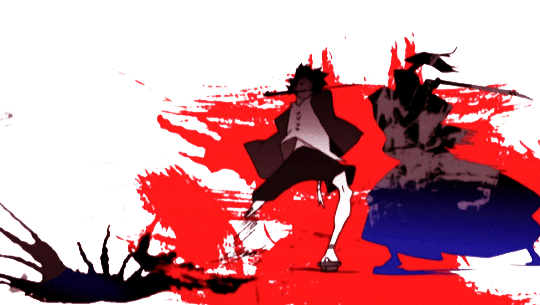Text
Mugen: The Embodiment of Shintoism’s Redemptive Delinquent, Susanoo-no-Mikoto
Before I get into this Samurai Champloo analysis, I first want to make this clear that this is all interpretations I have made. There’s no actual direct information about the Shinto stuff (that I’ve seen), but I found a lot of parallels. There’s also a lot of variations in Shinto myth! So you may find some different but similar details.
To begin, one would at first think Mugen would be a representation of Amaterasu, Kami of the Sun, because of his association with red, fire, the sun, and the rooster in his title image. (Rooster’s represent the dawn and they were used to lure out Amaterasu from a cave). And in contrast, Jin would be associated with Susanoo, God of the Ocean and Storms, because of his association with water, and the aquatic fish in his title image. However, based on everything I am about to list, it is the exact opposite. Mugen and Jin are supposed to be like Yin and Yang, their elements canceling each other out. However, the two do possess traits of one another. For Mugen, it’s Jin’s samurai honor and morality. For Jin, he has Mugen’s stubbornness to not follow those he considers unworthy.
Mugen and Susanoo’s Personalities
Susanoo in his earliest myths, is seen in an extremely negative light. He is violent, rude, wild, arrogant, and loathed by the other Kami for his impulsive actions. In particular, his older sibling Amaterasu despises him. She by comparison, is benevolent and calm. He is the embodiment of chaos in stark contrast to his sister who represents “the balance of the universe”. Susanoo’s appearance is also supposed to be disheveled.
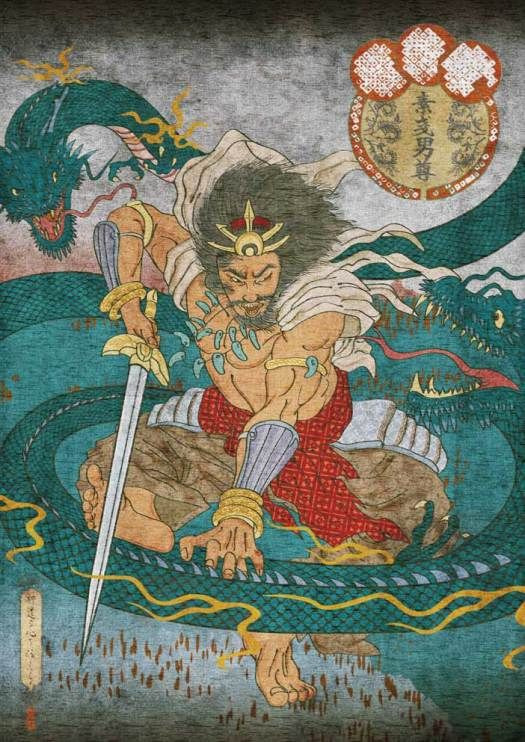
Susanoo, along with his two siblings, were born after his father Izanagi cleansed his face, after visiting the polluted underworld known as Yomi.
But…while Amaterasu and Tsukuyomi were born from Izanagi’s eyes, Susanoo was born from Izanagi’s nose last. The Kami believe that Susanoo had already absorbed some of the impurities of the underworld, and was tainted at birth.
This idea of being “lesser” fits very much in how Mugen is treated by society. The Ryukyuan people were heavily subjugated and experienced severe discrimination by the Japanese.
Ocean And Storms Symbolism
Susanoo is most notably the Kami of the Ocean, Storms (particularly rainfall) and Harvest (also because of rainfall). Later though, he ends up becoming the Kami associated with Love and Marriage. This will be explained further later.
Mugen has a heavy affiliation with the ocean, because of his previous occupation as a pirate and being born and raised in the penal colony island known as Taramashima which is near Miyakoshima in the Ryukyus. It’s the circular island on the bottom left, below.
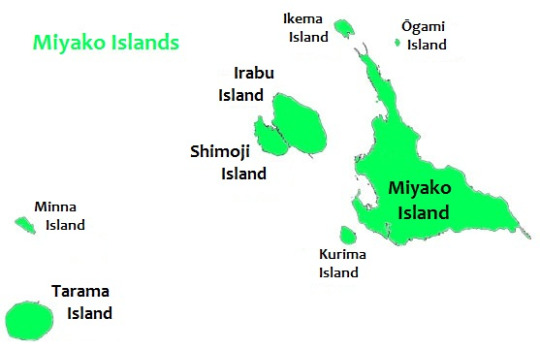
We know Mugen is from here because the black figures that try to send him to the afterlife are known as Paantu. Paantu are deities from a Miyako Island festival that cast out evil spirits by throwing sacred mud on houses and people. In addition, Taramashima was used as a penal colony for Ryukyuan criminals during this time period, and is affiliated with Miyakoshima since it is so close by.
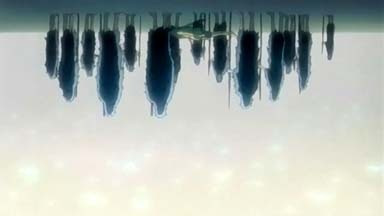
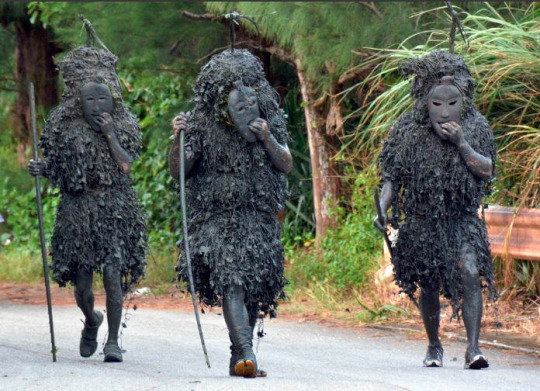
Also, in one of his most defining moments, he swims and emerges from the ocean in episode 25 to save Fuu.
More interestingly, Mugen is definitely associated with storms and typhoons (heavy tropic storm).
The Ryukyuan Islands have a long association with typhoons, because they were so common there throughout history, causing much damage and famine. In World War II, the Battle of Okinawa, known as the bloodiest Pacific battle, was called “The Typhoon of Steel”. In 1972, Okinawa made the flower of the coral tree or the “deigo”, their prefectural flower.
These flowers can be seen in episode 14, during Mugen’s flashback.
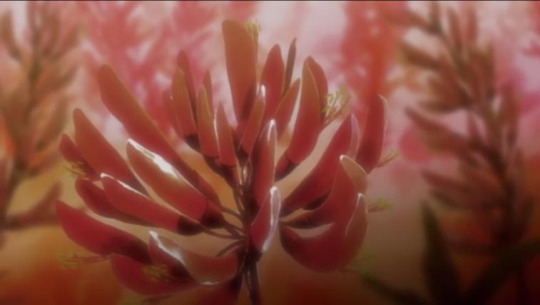
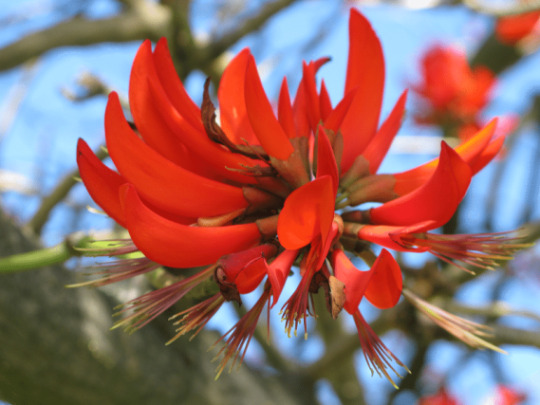
What is interesting…is deigo flowers are a symbol of disaster or catastrophe, namely typhoons. There is an Okinawan belief that the more deigo flowers bloom, the more typhoons there will be. In this episode, which is all about Mugen’s past, we are given double symbolism of the ocean and storms, when he nearly drowns during a severe rainstorm.
In addition, while Mugen’s sword is never named in the anime or manga, his blade is called “Typhoon Swell” in the Samurai Champloo: Sidetracked PS2 video game.
Fall From Grace and Rivalry with Amaterasu
Because of Susanoo’s bad attitude, chaotic personality, and destructive nature, Izanagi, chief of the Gods deemed Susanoo unworthy to live in the Heavens. So he was banished.
Accepting his fate, Susanoo decided to visit his sister Amaterasu before his departure, who had long been his rival that he fought with often.This is largely because Amaterasu as Izanagi’s first child, had divine right to rule, while Susanoo was the youngest and was believed to have impurities. Their rivalry is a symbolism of sunshine versus rain. Both are needed for the harvest, but too much of either causes famine.
This sounds a lot like Mugen and Jin, who cancel each other out.
When Susanoo went to see Amaterasu, the lands shook, and Amaterasu grew suspicious he was causing trouble, so she met him dressed in men’s clothing and in armor. To prove he had good intentions in saying farewell, Susanoo challenged her to a contest of who could create the most gods, in order to prove his sincerity.
Amaterasu took his sword, and broke it, forming three male kami. Susano took her necklace and broke it, forming 5 female kami from the magatama beads. There’s some variations to who exactly won. One says that Susano raged happily since he made more. Another says Amaterasu used trickery, and told him that the 5 female goddesses belonged to her, since they were made from her necklace and the 3 male gods were his since they came from his broken sword. This then infuriated him.
This is similar to how Mugen and Jin broke each other’s swords in episode 26, and neither really won.
Either way, Susanoo went wild, either from rage or pride and committed several heinous deeds, namely destroying Amaterasu’s rice fields and defecating in her palace. He also flayed and killed a holy horse and threw it at Amaterasu’s holy loom, which killed one of her servants.
The holy horse seems to be important to me.
Mugen’s last antagonist of the series are the three Satsuma brothers. In particular, Umanousuke is his biggest enemy who had kidnapped Fuu, tied her to a cross, and brutally tortured Mugen after he gave up his sword to free her. I am no expert, but from what I can gather, “nousuke” in a name, means second in command beneath a lord. And “Uma” means “horse”.
After his belligerent acts, Susanoo was then thrown from the Heavens to inhabit the earthly plane, which is considered to be Japan. Similarly, after Mugen’s pirating in Satsuma, that negatively impacted Umanousuke and his brothers, Mugen finally made it to Japan.
Susanoo and Mugen’s Redemption: Saving a Woman
Despite having been seen as a wild and evil God, there is one story that redeems him, showing him as heroic, and also allows him to reconcile with his sibling.
After Susanoo was cast out of the Heavens, he walked the lands of Japan. This is similar to Mugen being shunned by society for his astigmatism of his prison tattoos, as well as being an illegal alien in Japan, since he hails from the Ryukyuan Kingdom, which at this time period, is in a very complicated relationship between China and Japan.
It is while Susanoo is in the land of man, that he for the first time, is shown actually caring for another person: a young girl.
In his travels, he meets a sorrowful, elderly man and woman who are weeping over their daughter. Susanoo curiously asks why they are crying.
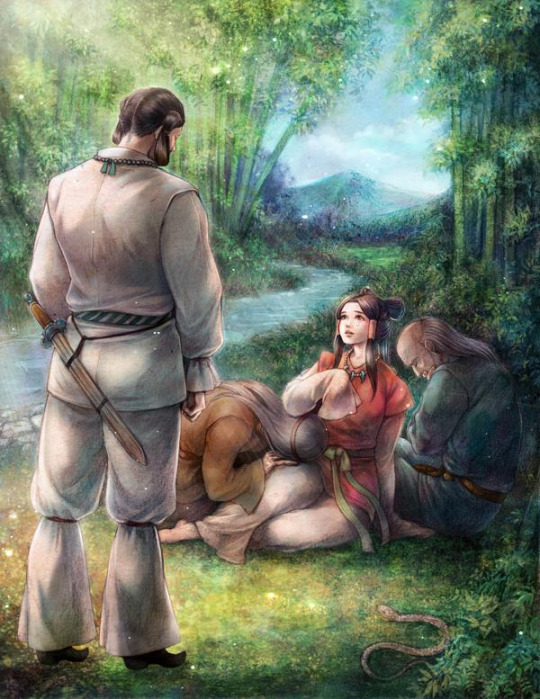
They tell him that they have lost seven of their daughters to a sea serpent named Yamata-no-Orochi (8 forked serpent) who has devoured them year after year. Now, it is time for the sea serpent to devour their last and youngest daughter: Kushinadahime.
In an uncharacteristic act of sympathy, Susanoo offers to help them. He tells the old couple to give him their daughter so he can protect her.
Upon entering the teahouse of episode 1, which was owned by an elderly couple…Mugen meets Fuu for the first time and saves her.
Susanoo transforms Kushinadahime into a small comb and hides her in his hair so that the serpent can not find her. Then, he goes off to kill the giant snake. He gets the serpent drunk off of very strong sake, and slays it.
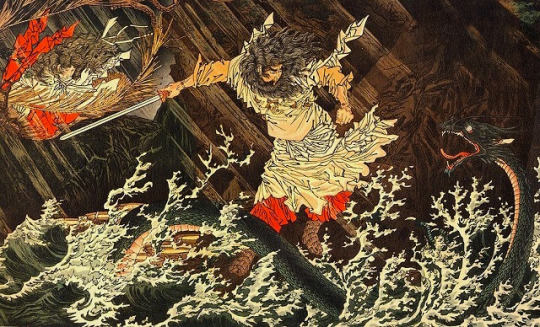
From the serpent’s tail, Susanoo acquires the Ame-no-Murakumo-no-Tsurugi (the sword of gathering clouds). This sword has come to represent virtue.
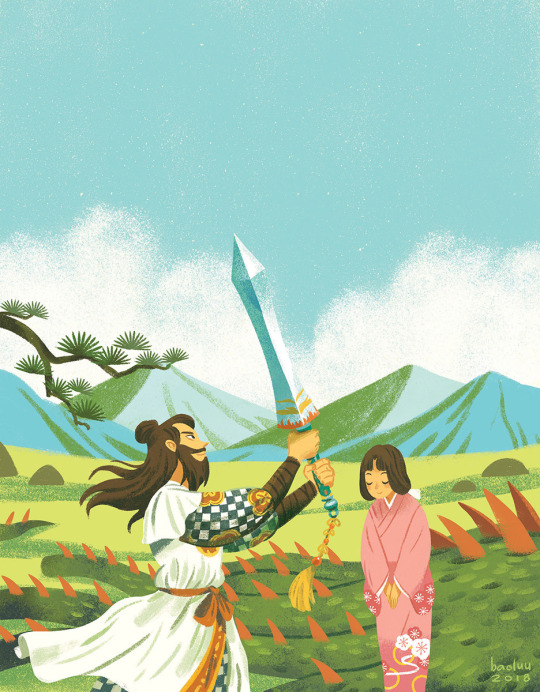
After saving the girl, Susanoo asks her father for the girl’s hand in marriage. And then, after this, it would seem his new wife had tamed his tumultuous heart. She becomes venerated as the Kami of Rice and bears his 5 children. Many temples and festivals honor them together to this very day!
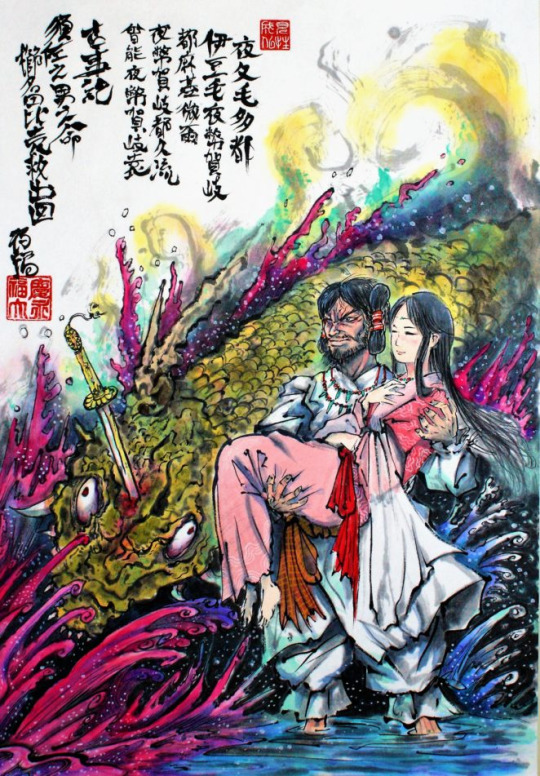
It is after this point, that Susanoo is no longer seen merely as the violent, antagonistic god of storms. He also becomes venerated as the God of Love and Marriage because of his heroism and love for the girl he saved.
A violent, belligerent sinful killer who falls from grace…who is redeemed by protecting a woman and becoming a hero…
You probably see where I’m going with this. Mugen and Fuu are heavily implied to have a subtle romance in the series. But if you’re confused by this and need sufficient evidence, please let me know and I’ll provide my many posts that explain it in detail. I will merely bring up one scene here, in order to tie Mugen’s connection with Susanoo, who has become the God of Love.
In episode 21, Sara tells Mugen “Powerful hatred and rage swirl within you. I cannot tell if it is sadness. It is as if you have never once been loved.”
When Mugen falls to the ground, and Sara readies her blade to kill him, Fuu jumps across his body to shield him from Sara, and begs her not to kill him. In this moment, Sara gasps, and spares Mugen’s life. In this moment, she realizes she was wrong. There is one person who does love him, enough to put her own life at risk.
This is very similar to Susanoo. Up until the point of saving Kushinadahime, he was hated by all the Gods, including his own family. But when he saved her life, she married him, implying her appreciation and love for him.
“In Search of New Lands, I Build a New House”
Immediately after marrying Kushidahime, the lovers travel around Izumi before they can find a suitable place to live. Upon arriving in Suga, Susanoo happily states “Coming to this place, my heart is refreshed.” and then built a lovely palace for him and his wife. Upon its completion, Susanoo composed a song.
The many-fenced palace of IDUMO:
“Of the many clouds rising— To dwell there with my spouse Do I build a many-fenced palace
Ah, that many-fenced palace!”
In Episode 14, during Mugen’s flashbacks, a folk song called “Obokeuri Eeumi” plays. Because it is possibly Ryukyuan (or from Kyushu) , and also deals heavily with poverty, and being unable to sustain one’s family, it is safe to say the perspective could be Mugen’s. It is especially important that the very last image he sees when the last lyric of the song plays is Fuu’s face. This last lyric is about the narrator’s lover.
Obokeuri Eeumi (Obtain Our Bearings):
In search of new lands, I build a new house I thatch the house with reed stalks, gathered neatly in bundles. I thatch the house with reed stalks, gathered neatly in bundles. At the stone wall, let us celebrate the golden house, that was built by a hundred carpenters. At the stone wall, let us celebrate the golden house, that was built by a hundred carpenters. Let us celebrate the golden house, that was built by a hundred carpenters. August is fast approaching, and yet I have nothing to wear I want to dress up, so brother, will you lend me just one sleeve? I wish to dress my children and loved ones… in the one kimono that I own. As for me, I will wear vines… that I plucked deep in the mountains. The light of the harvest moon shines down, illuminating the world with its divine light. When my lover sneaks in to visit me, I wish that the clouds would hide that light just a little.
Both songs are about building a house to live in with one’s loved ones, with a mention of encroaching clouds. Because Susanoo composed his song, and Obokeuri Eeumi specifically plays for Mugen’s near death experience, these songs are reflections of their characters.
Making Amends With the Rival
At some point, before or after building his home, he visits Amaterasu, his long time rival, and offers his sister the sword he acquired from killing the snake, so that the two may finally reconcile. This sword makes up the three Imperial Regalia, along with the Yata no Kagami mirror and the jewel Yasakani no Magatama. After this moment, Amaterasu and Susanoo are no longer bitter enemies, and finally accept one another as siblings.
On the same journey of redemption that Mugen took, in which he saved Fuu time and time again, by the end, Mugen was able to reconcile with his longtime rival, Jin.
More Minor Amaterasu and Jin Symbolisms
It is from Amaterasu that all Japanese emperors claim descent. For that reason, she is the embodiment of the Japanese people. I think this is very similar to Jin, who is a representation of the ideal Japanese samurai with all of its virtues.
When Amaterasu fled from the heavens because of Susanoo’s many insults, the world became a dark and stormy place, because there was no longer any sun. Amaterasu did not want to leave the cave as she grieved for the servant Susanoo had killed. Though it might be reaching, I saw this very comparable to episode 11 of Samurai Champloo, where the trio were stranded in Hamamatsu with perpetual rain. Here, Jin states “I hope that the rain will never stop. Then, I can stay here forever.” when in reference to staying with Shino.
Amaterasu was also insulted by her husband Tsukuyomi for killing her friend, the Kami of Food, and thus never saw him again. This is a representation of the Day and Night cycle, since Tsukuyomi is the Kami of the Moon. I found this similar to Jin having to part from Shino for three years because of her stay at the Divorce Temple. In addition to that, he met with her at night when he purchased her at the brothel. But when the morning came, she told him it was “time for the fairytale to come to an end.”
When Jin parts ways with Shino, the bridge they met on is shown one last time. Except this time, there is no more rain. There is only sunlight.
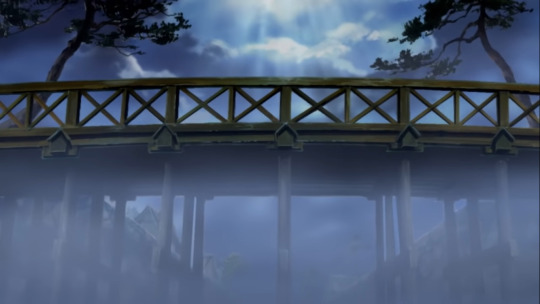
This is a representation that he must continue on his own journey for the samurai who smells of SUNflowers, for it is his duty, just as Amaterasu reluctantly left her cave at the behest of the other Gods…because it was her responsibility to have the sun rise in the sky again.
In conclusion
Mugen and Susanoo were both hated and considered evil. Both were outcasts. But their chivalrous actions in saving a young girl they cared about redeemed them.
Mugen and Susanoo both had a rival that was their polar opposite, but in the end, the two were able to reconcile and value one another.
(And I found another excuse to ship Fuugen.)
145 notes
·
View notes
Photo

Megalo Box is basically a throwback to all those legendary animes with good music and i’m loving every second of it. Not to mention Junk Dog oh man that boy is like the perfect fusion of all my afro husbands
1K notes
·
View notes
Photo
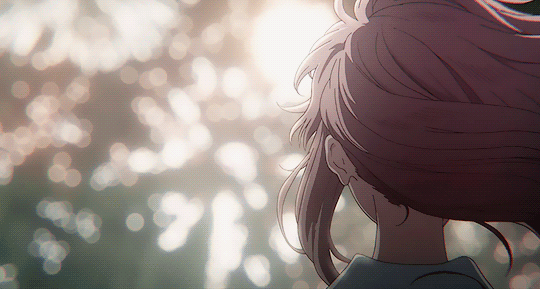
22K notes
·
View notes
Text
Weekly Shonen Jump 2018 issue #21/22 character costume change illustrations

Luffy from One Piece cosplaying as Deku from My Hero Academia
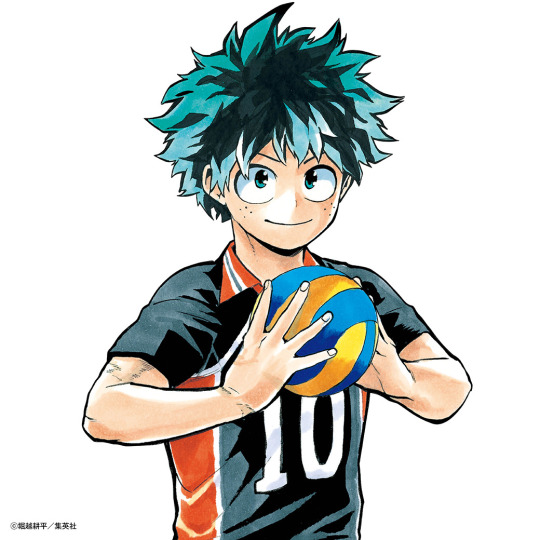
Deku from My Hero Academia cosplaying as Hinata from Haikyu!!
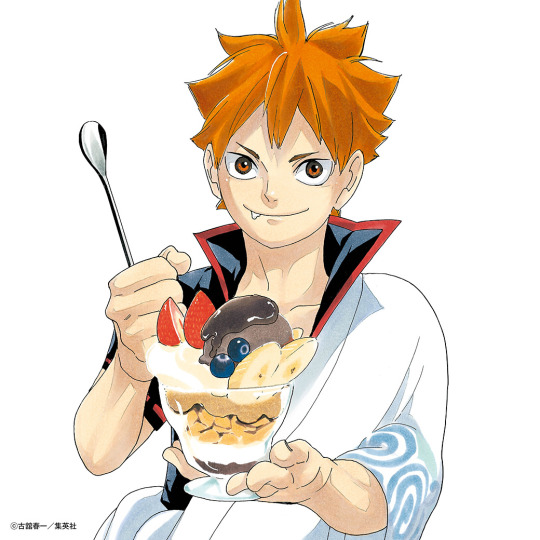
Hinata from Haikyu!! cosplaying as Gintoki from Gintama
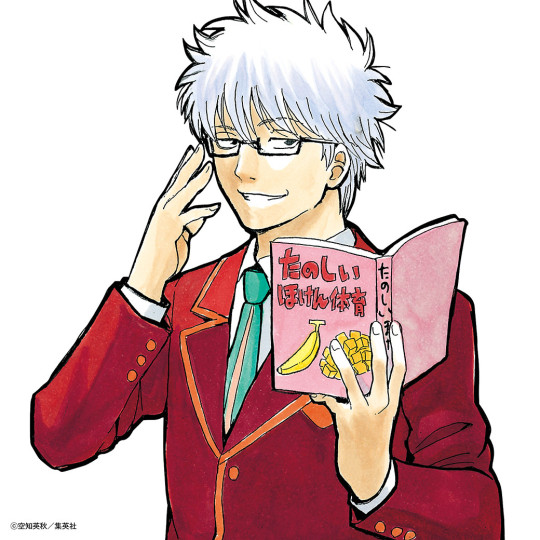
Gintoki from Gintama cosplaying as Yuiga from We Never Learn

Rizu and Fumino from We Never Learn cosplaying as Emma from The Promised Neverland
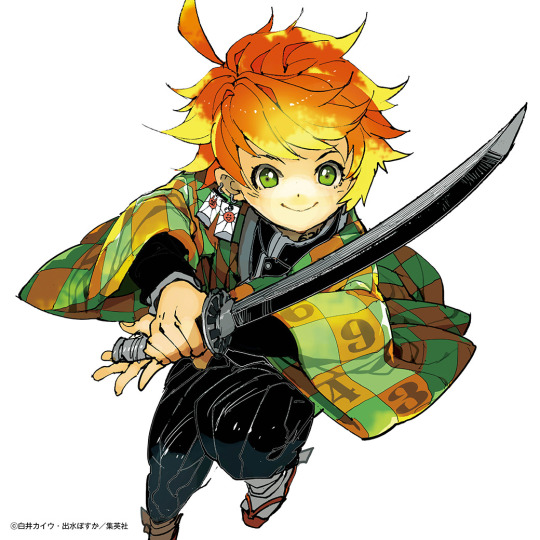
Emma from The Promised Neverland cosplaying as Tanjirou from Demon Slayer: Kimetsu no Yaiba
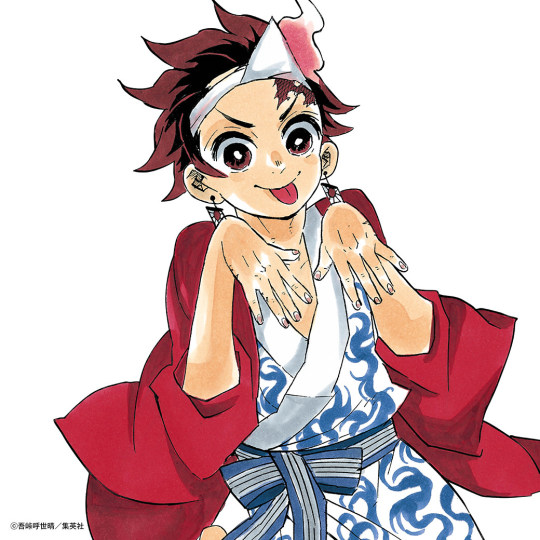
Tanjirou from Demon Slayer: Kimetsu no Yaiba cosplaying as Yuuna from Yuuna and the Haunted Hot Springs

Yuuna from Yuuna and the Haunted Hot Springs cosplaying as Yonagi from Act-Age
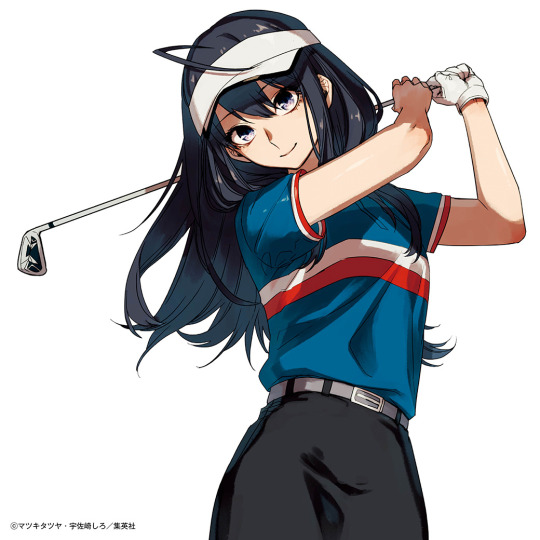
Yonagi from Act-Age cosplaying as Robato from Robot x Laserbeam
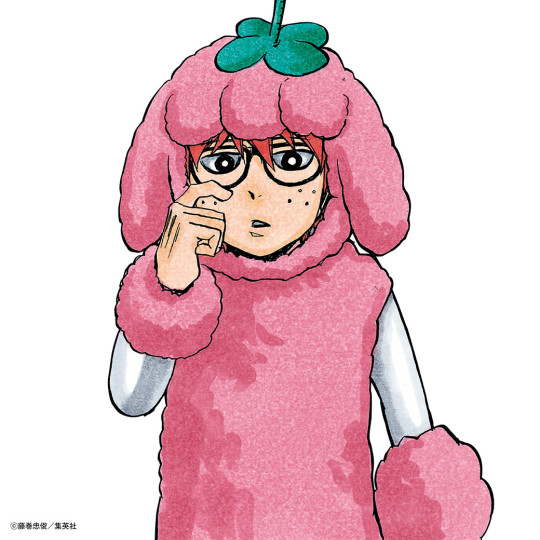
Robato from Robot x Laserbeam cosplaying as Lycopene from Lycopene the Tomatoy Poddle
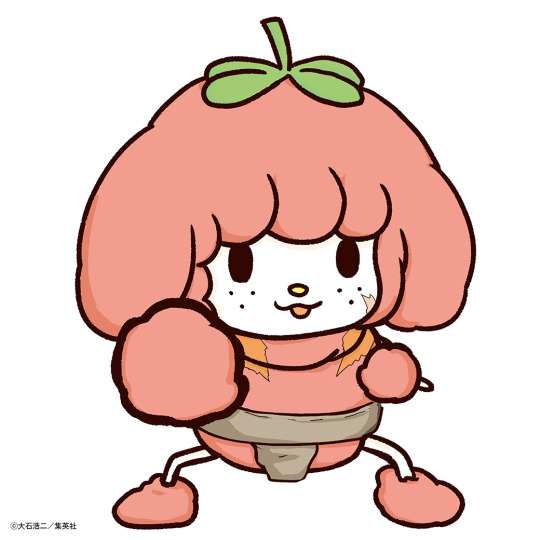
Lycopene from Lycopene the Tomatoy Poddle cosplaying as Hinomaru from Hinomaru Zumo

Hinomaru from Hinomaru Zumo cosplaying as Soma from Food Wars!: Shokugeki no Soma

Soma from Food Wars!: Shokugeki no Soma cosplaying as Senku from Dr. Stone
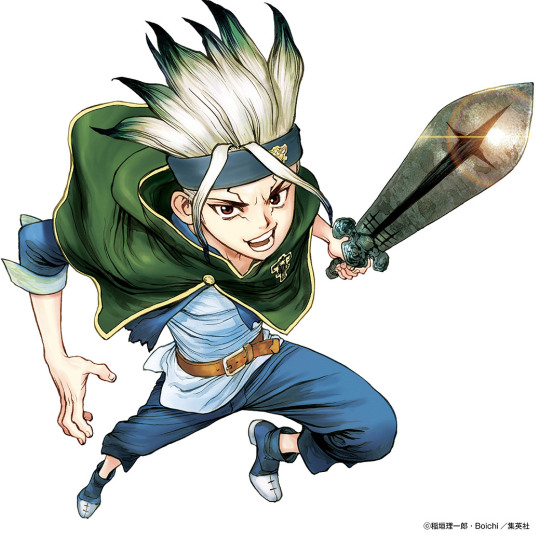
Senku from Dr. Stone cosplaying as Asta from Black Clover
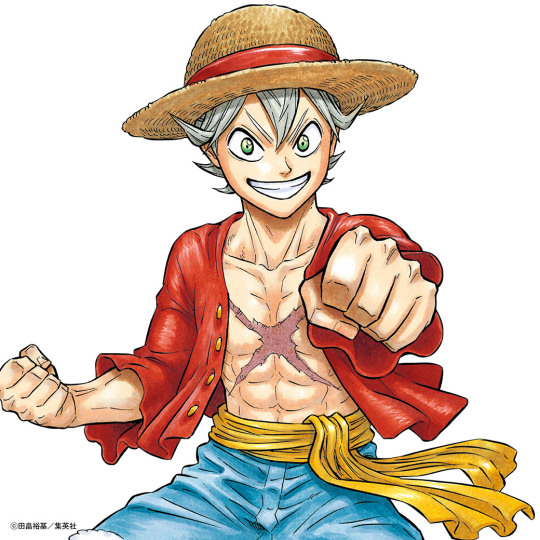
Asta from Black Clover cosplaying as Luffy from One Piece

Noah from Noah’s Note cosplaying as Ko from Ziga

Ko from Ziga cosplaying as Itadori from Jujutsu Kaisen

Itadori from Jujutsu Kaisen cosplaying as Noah from Noah’s note
#crossover#jujutsu kaisen#ziga#noah’s note#one piece#black clover#shokugeki no soma#food wars#Dr.stone#hinomaru zumou#lycopene the tomatoy poodle#robot x laserbeam#act age#yunna and the haunted hot springs#demon slayer kimetsu no yaiba#we never learn#the promised neverland#gintama#haikyuu!!#my hero academia#anime
11K notes
·
View notes
Text
Top 10 Favorite Anime
*Doesn’t contain spoilers (ㅅ´ ˘ `)♡
1. Michiko to Hatchin (2008-2009)
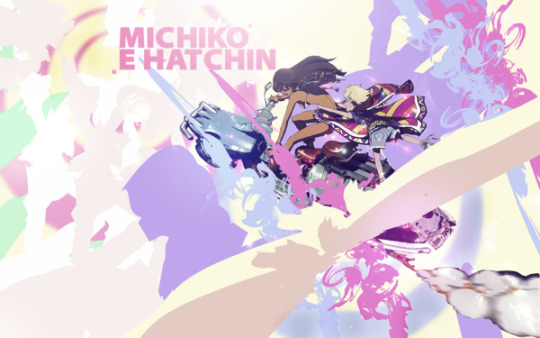
“Michiko to Hatchin,” may appear slightly flawed to the eyes of others, but I have fallen completely in love with this show for a plethora of reasons, both personal and critical. First and foremost, diversity is theme I am particularly fond of, fictionally and in the real world, so seeing an anime that takes place in South America was like a much needed breath of fresh air. On top of that, the soundtrack was completely on par with the gunslinger vibe the show gave off while still keeping the setting of South America in mind. Typically, in 24 episode long shows, such as “Michiko to Hatchin,” the show will begin to drag at some point during the middle. However, the director, Sayo Yamamoto, skillfully switches the show from being story driven to episodic as to keep the viewer entertained and when the time came, picked the story right back up where it left off. Ultimately, I bestow this show with the first 10 out of 10 on this list for its unique setting, characters, and adept pacing.
2. Cowboy Bebop (1998-1999)
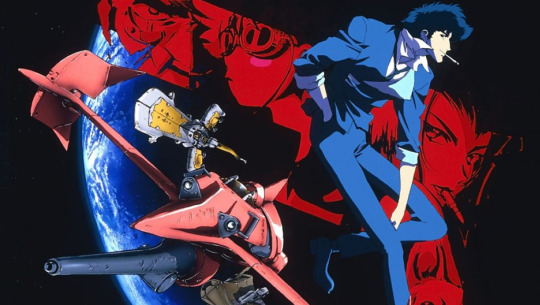
Arguably, not only Shinichiro Watanabe’s greatest creation, but one of the greatest anime shows of all time, is the iconic “Cowboy Bebop.” As to why this show is ranked so high up in this list, as well as any other top anime list, is fairly self explanatory. But to reiterate basically the entire anime community’s opinion on “Cowboy Bebop,” first, it takes place sometime in the far future and hubs on the misadventures of the bounty hunter, Spike Spiegel, and his partners as they search for criminals. Essentially, every aspect of the show is nearly or truly is perfect. The smashing soundtrack to the wonderfully cultivated characters to the attractively sculpted ending, everything, and I mean everything, about “Cowboy Bebop,” screams a 10 out of 10.
3. Barakamon (2014)
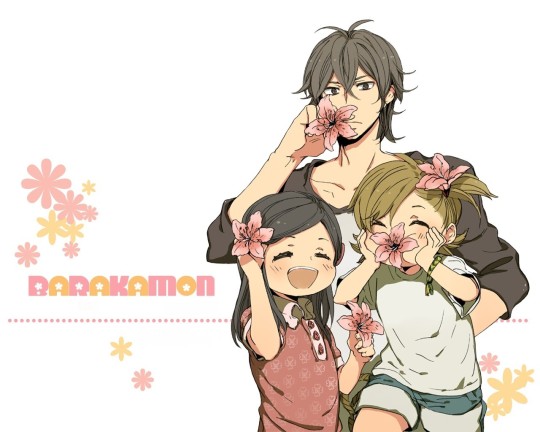
“Barakamon,” is a light hearted, genuinely funny, comedic slice of life anime. It pivots on Handa Seishuu, a calligrapher with a tremendous ego and severe anger issues. After punching another renowned calligrapher, after he criticized Handa’s work for being comparatively lifeless and ‘textbook,’ essentially boring, he is exiled to Gotō Island to better himself and his works. In his duration on Gotō Island, he encounters outlandish Japanese village folk, such as a little girl named Naru Kotoishi. Sooner or later, Handa soon finds himself changing for the better as a result of his stay on Gotō Island. Personally, comedy anime have never been my cup of tea for the sole reason that they fail to make me laugh, but evidently “Barakamon,” came along. I mean, I fell so hard in love with this series that I own the first nine volumes of the manga for it is astoundingly beautiful and hilarious. “Barakamon,” is a soon to be classic for the next generation of anime fans and a simple 10 out of 10 that will surely get laughs out of any person to come across it.
4. Mind Game (2004)

Made by the man, the myth, and the legend himself, comes debatably Masaaki Yuasa’s greatest work, “Mind Game.” “Mind Game,” is in fact a film not a single person could ever explain to you what it’s about. If anything could describe the film, is that it’s about the mind boggling experience of second chances and rebirth. If that doesn’t seem to have enough substance for you, then keep in mind, based off of Masaaki Yuasa’s track record of finely tuned character development and crazy animation, you’ll have to trust me when I say this, “Mind Game,” is a must see for it is nothing short of cinematic, surreal, masterpiece for I myself even own a copy of this movie. Conclusively, the irrefutable rating this film deserves is an obvious 10 out of 10.
5. Mononoke (2007)

“Mononoke,” no, not the movie, is a spinoff of the 2006 horror series “Ayakashi: Samurai Horror Tales.” “Mononoke,” is an episodic series that focuses on a mysterious demon vanquisher, respectively disguised as a medicine seller, and the trials and tribulations he must go through in order to save the demoniac and surmount the demon itself. The first notable feature of “Mononoke” is its usage of color and perspective(s) that make each story within the show all the more captivating and exciting to watch. To go along with that, each story goes in massive depth with its characters, successfully inducing a very emotionally powerful relationship with the viewer almost every time. Yet, as the ending isn’t necessarily sub par, it leaves you hungering for more. Nonetheless, this show deserves nothing but a 10 out of 10.
6. Ping Pong the Animation (2014)

This being Masaaki Yuasa’s second appearance on this list, the only other work this position could've been gifted to is his masterful “Ping Pong the Animation.” Masaaki Yuasa, once again, is notorious for his stellar character development and this is it in its prime. Somehow, each character, no matter how insignificant, has a profound effect on the show and everlasting impact on the viewer. It’s almost unbelievable how a show about ping pong could be so relatable with the main characters inner struggles and their escapist hobbies whilst remaining an intense an interesting sports anime like any other. A facile 10 out of 10.
7. Kekkai Sensen (2015-2017)
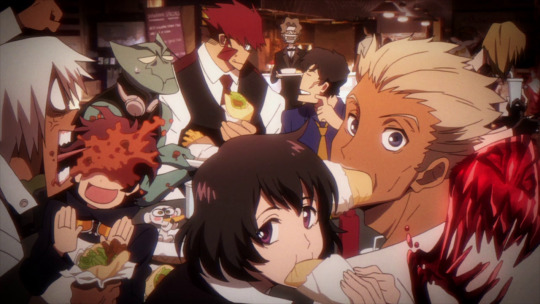
“Kekkai sensen,” is definitely one of the more light hearted series on this list in which it’s about the supernatural monsters that now live alongside humans in places such as Hellsalem's Lot, formerly known as New York City. The main character soon finds himself leading out an extraordinary life in the said city as he joins the estranged group Libra after attaining the All-seeing Eyes of the Gods at the expense of his sister's eyesight. “Kekkai Sensen,” is a fun and witty show that any anime fan would enjoy. The visuals are eye-catching as well as the music being funky, making it quite the delightful series. Even so, as the finale approaches, it becomes unexpectedly emotional furthering the show’s greatest and superiority as well as establishing a great sense of character depth. Final rating, 9.6 out of 10.
8. In This Corner of the World (2017)
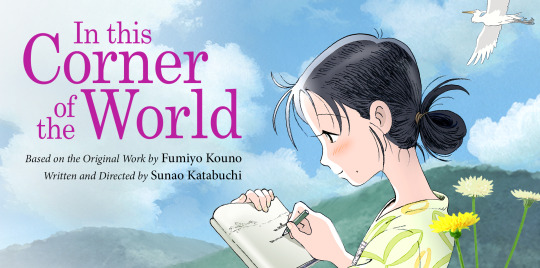
“In This Corner of the World,” is a film that takes place in Hiroshima during World War II, which focuses on a young woman by the name of Suzu and her daily struggles during this time period. This seemingly drab movie in fact blossoms into something tragically beautiful and easily one of the greatest anime films ever composed, alongside the aforementioned “Mind game.” It unexpectedly tugs at your heart strings with magnificently animated pieces of Suzu’s art to display her interpersonal feelings when faced with particular situations, topped with an equally wondrous soundtrack. This film executes all the components, such as character development, pacing, and directing, of a good anime perfectly, making it optimal for critical and personal enjoyment. Final verdict, an easy 10 out of 10.
9. Neon Genesis Evangelion (1995-1996)

“Neon Genesis Evangelion,” is another iconic franchise that effected the anime community as well as the mecha genre itself as we know it today. “Neon Genesis Evangelion,” takes place in a post-apocalyptic era whereas humanity’s last hopes is in the hands of Nerv, a special agency ran by the United Nations. Nerv was founded in order to combat Angels, the species responsible for the destruction of Earth, using Evangelions. The show specifically focuses on the youth, Shinji, Asuka, and Rei, who pilot the Evangelions and their emotional reactions as a result of the responsibility being forcibly left on their shoulders. Although “Neon Genesis Evangelion,” is nothing apparent to reality, it feels exactly like real life. The emotional responses of the characters are ones you would witness in real people or rather experience yourself. The realism and psychology this show implements is absolutely groundbreaking and proved extremely influential on future mature anime. Thus, “Neon Genesis Evangelion,” is so deservingly awarded with a 10 out of 10 for the emotional levels throughout each episode.
10. Shingeki no Bahamut: Genesis (2014)
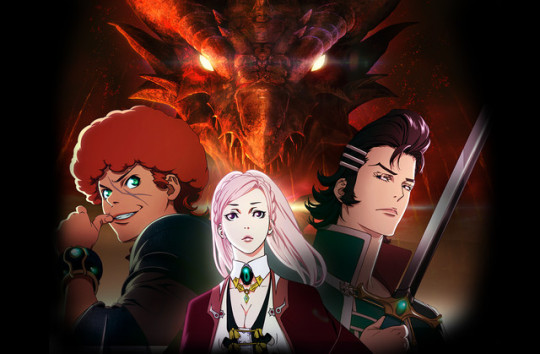
Based off the “Shingeki no Bahamut,” card game franchise comes “Shingeki no Bahamut: Genesis,” as created by Studio Mappa. The show centers on a world of demons that are in constant war against angels and humans, but as the ancient dragon Bahamut appears before them and lays waste to their planet, the aforementioned races combined their forces in order to expel Bahamut and preserve life. However, thousands of years later, a mysterious woman by the name Amira appears in front of two bounty hunters, Favaro and kaiser, who ironically holds half of the key that is sealing Bahamut away. Simply, this show is nothing short of badass paired with a rock and roll soundtrack combined with quirky characters who you will fall in love with as they fall in love with each other. Final rating, 9.8 out of 10.
#michiko to hatchin#cowboy bebop#barakamon#mind game#mononoke#ping pong the animation#kekkai sensen#in this corner of the world#neon genesis evangelion#shingeki no bahamut: genesis#anime#anime review#anime film#anime movie#shinichiro watanabe#masaaki yuasa#studio mappa#studio bones#science saru
694 notes
·
View notes
